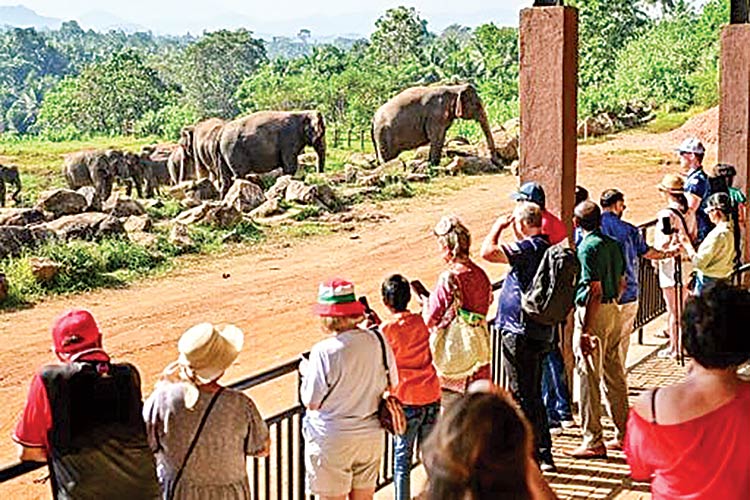Life style
Stem Cell Treatment – the antidote to prevent hair loss
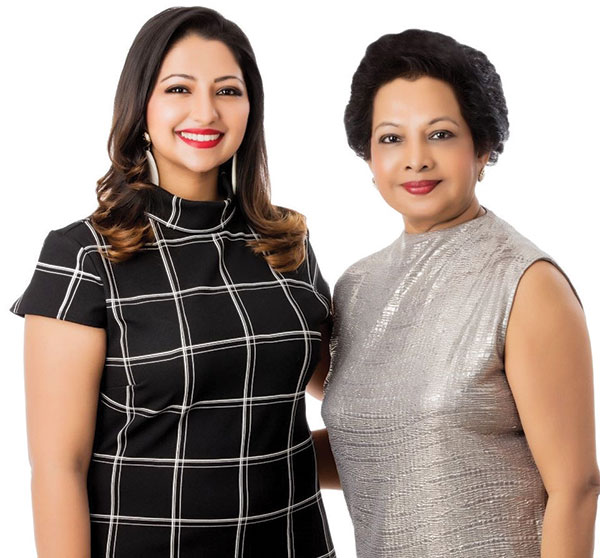
by Zanita Careem
“Many women with hair loss suffer in silence altering their hair style to hide thinning or patches. The sooner you take care of it, the better the chances of treating it,” says Dr. Shanika Aresecularatne, leading Medical Cosmetology expert in Sri Lanka at the Christell Skin Clinic and Durdans Hospital Cosmetic Care Unit.
She speaks about her passion for making women more beautiful with aesthetic medicine and cosmetic care therapy. She says many popular figures in the world like celebrities and models have undoubtedly done aesthetic therapy to look gorgeous.
What are the most common form of female hair loss?
Female pattern of hair loss usually has a strong genetic component that can be inherited.
How do you fund aesthetic solution to answer every hair and scalp dilemma?
This is the first time in Sri Lanka. We have adopted a non-invasive AAPE stem cell for hair growth.
What is AAPE?
It is advanced adipose derived stem cell protein extract treatment for hair skin and body. This method addresses hair loss. The products strengthens and nourishes hair follicles and surrounding tissues to make hair grow.
Where is the new ‘Christell’ crown centre situated?
The new centre is at one Galle Face Shopping Mall.
What are the other kinds of treatment you offer?
Our well trained medical doctors and trained professionals give the best hair and tissue mineral scans, stem cells, hair growth, scalp rejuvenation and circulation boosters.
Are there any side effects?
Not at all. The success rate is very promising. The cost depends on the type and extent of the hair. This method is painless and very effective. The women will have a full hair growth in no time.

How Do Stem Cells Help?
In order to understand how stem cells help address hair loss, its necessary to understand what stem cells are.
Essentially, a stem cell is a cell that is capable of numerous divisions (in some cases, indefinite divisions). It is also capable of making new cells that the body doesn’t normally produce on its own. This includes nerve cells, cardiac cells, mature blood cells and many others. When dead or damaged hair follicles stop growing, the body does not always replace them.
There is evidence that stem cells may help by retriggering the growth and reproduction of cells in an area of the body that was formerly too old or damaged. By reintroducing such cells to the scalp, physicians and aestheticians can help clients rediscover their formerly thick, lustrous hair.
What is Stem Cell Transplant for Hair Loss?
The process of stem cell transplant for hair is similar to the traditional methods of stem cell treatment. Instead of removing a number of hair strands to transplant to the hair loss areas, a stem cell transplant for hair is performed. The procedure starts by removing a skin sample where the hair follicles are obtained. The sample is then reproduced and implanted in the area with hair loss. This allows the hair to grow and propagate in the parts where hair has thinned or is absent, and where the follicles were taken from.
Whose Stem Cells Do You Use?
In many cases involving regenerative medicine, it is dangerous or unwise to use one’s own stem cells. That’s because, in the event that the patient has cancer or another transmissible disease and is trying to combat or cure it, the person’s own stem cells may introduce the very disease the patient otherwise wants to address.
However, in the case of hair loss, the problem is a natural one and not the product of a deadly ailment. That makes it much safer to use one’s own tissue. Moreover, there is no risk of graft-versus-host disease (in which a donor’s cells will attack the patient’s body to which they are introduced, causing a range of symptoms or even death). For obvious reasons, except in the case of an autoimmune disorder (which, again, likely isn’t present), the patient’s own cells will not attack their body.
That makes harvesting the patient’s own cells relatively safe and effective according to the Hair Science Institute, stem cell transplant is painless and effective.
The steps include:
1. Removing blood or fat
2. Isolating stem cells from the sample
3. Removing part of the hair follicle (and leaving a part in place)
4. Stimulating and duplicating hair follicles in the lab to create more of them
5. Injecting existing donor follicles with stem cells to stimulate regrowth
6. Inserting new follicles on bare parts of the scalp, along with stem cells to stimulate their growth as well
The stem cell injection and hair implants are relatively painless and most likely once the patient has done a round of treatments (discussed below), they won’t have to undergo them again.
Stem Cell Transplant for Hair Recovery and Side Effects
There’s no recovery time required for stem cell transplant for hair loss. The patient may experience pain after the procedure but this should decrease within a week post-treatment. The patient may also expect scarring on the areas where the tissue sample was removed. Excessive exercise must be avoided in a week following the procedure.
Success Rate and Cost of Stem Cell Transplant
While the success rate of stem cell transplants can vary by procedure, in a well-known study published June 2017, Italian researchers documented a 29% increase in hair density for 23 weeks after stem cell therapy.
These researchers developed a method for isolating human adult stem cells using centrifugation after collecting a biopsy from human hair follicles. Summarizing their findings, the researchers conclude, ‘we have shown that the isolated cells are capable to improve the hair density in patients affected by androgenetic alopecia (AGAL).
It normally requires between two and six treatments to see results, and even then a patient may need more to get the look they want. Also, results are never guaranteed, so even the patient is willing to pay for as many as possible, the returns may diminish over time. If, knowing these facts, the patient wishes to proceed, there is a good chance they’ll like the results.
Who will benefit from this stem cell treatment for hair loss?
The short answer is (potentially) anyone. Stem cells harvested from one’s own body are very safe, and the process carries a low risk of infection or reaction.
Although there’s a potentially high success rate for stem cell transplant for hair loss, research about its medical procedure is still ongoing. If interested, it’s advisable to seek a stem cell transplant for hair from clinics approved by the FDA. For the time being, seeking more knowledge about stem cell transplant for hair is a stepping stone for understanding the therapeutic benefits of stem cells for hair loss.
Developed by the world-renowned dermatologist, Dr. Byung-soon Park, AAPE stem cell therapy for hair and skin maladies is a result of over 17 years of research, proven by multiple published studies. Furthermore, AAPE is the first product based on stem cell described in SCI journals with clinical results in humans, having been conducted on over 600,000 clinical treatments and used by over 3,000 dermatologists in more than 30 countries worldwide.
“At Christell Skin Clinic, we only offer US FDA-approved alternatives to invasive dermatological surgeries that would otherwise be painful, have numerous side effects, or are just not as effective in the long term,” said Dr. Shanika Arsecularatne, Medical Director of Christell Skin Clinic. “We are proud to bring many firsts to Sri Lanka and yet again with the launch of Christell Crown, we are excited to be the first to introduce’ the many possibilities of AAPE, and are certain that as with all of the other products and therapies we have pioneered, this offering too will significantly change the lives of many.”
Funded in 2014 by established aesthetician Prof. Ramani Arsecularatne, the Christell Skin Clinic has over the years offered a personalized and non-invasive approach to dermatology, helping clients get the very best out of their skin, hair, and body. From humble beginnings, the cosmetology centre has expanded its services, reach, and international standing, and now boasts two state-of-the-art facilities in Sri Lanka and the Maldives, with over 50 full-time employees, including specialized cosmetologists, medical doctors, and nursing staff. The centre has served more than 35,000 clients to date, including heads of state, VIPs, ambassadors, expatriates, and residents.
Life style
Sri Lanka’s first elephant orphanage celebrates 50 years
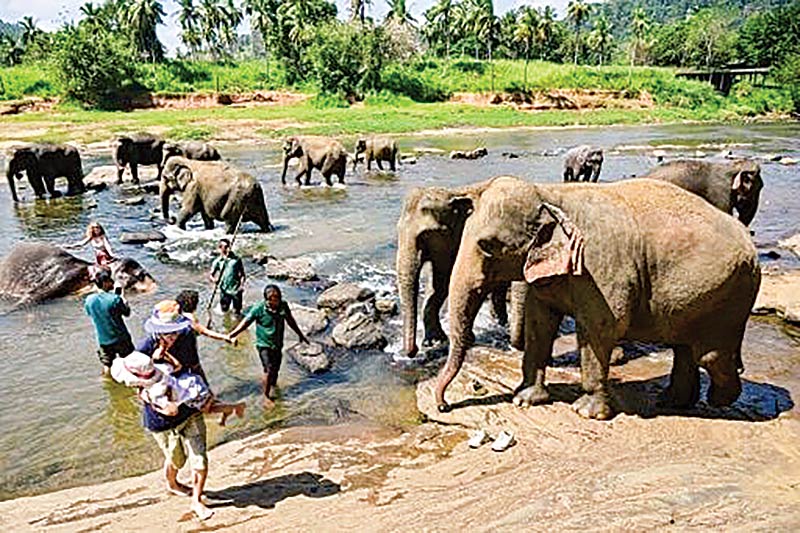
By Amal Jayasinghe
Pics by Ishara Kodikara
Sri Lanka’s main elephant orphanage marked its 50th anniversary on Sunday february 16 with a fruit feast for the 68 jumbos at the showpiece centre, reputedly the world’s first care home for destitute pachyderms. The Pinnawala Elephant Orphanage lavished pineapples, bananas, melons and cucumbers on its residents to celebrate the anniversary of their home, which is a major tourist attraction.
A few officials and tourists invited to the low-key celebration were served milk rice and traditional sweets while four generations of elephants born in captivity frolicked in the nearby Maha Oya river.
“The first birth at this orphanage was in 1984, and since then, there have been a total of 76,” said chief curator Sanjaya Ratnayake, as the elephants returned from their daily river bath.
“This has been a successful breeding programme, and today we have four generations of elephants here, with the youngest 18 months old and the oldest 70 years,” he told AFP.
The orphanage recorded its first twin birth in August 2021 — a rarity among Asian elephants — and both calves are doing well.
Two years before the orphanage was formally established as a government institution in February 1975, five orphaned elephants were cared for at a smaller facility in the southern resort town of Bentota.
“Since the orphanage was set up at Pinnawala in 1975, in a coconut grove, the animals have had more space to roam, with good weather and plenty of food available in the surrounding area,” Ratnayake said.
The home requires 14,500 kilos of coconut and palm tree leaves, along with other foliage, to satisfy the elephants’ voracious appetites.
It also buys tonnes of fruit and milk for the younger calves, who are adored by the foreign and local visitors to the orphanage, located about 90 kilometres (56 miles) east of the capital Colombo.
It is also a major revenue generator for the state, earning millions of dollars a year in entrance fees. Visitors can watch the elephants from a distance or get up close and help scrub them during bath times.
– Tragic toll –
The facility lacked running water and electricity at its inception but things improved as it gained international fame in subsequent years, said retired senior mahout K.G. Sumanabanda, 65.
“I was also fortunate to be present when we had the first birth in captivity,” Sumanabanda told AFP, visiting the home for the jubilee celebrations.
During his career spanning over three decades as a traditional elephant keeper, he trained more than 60 other mahouts and is still consulted by temples and individuals who own domesticated elephants.
Twenty years ago, Sri Lankan authorities opened another elephant home south of the island to care for orphaned, abandoned or injured elephants and later return them back to the wild.
While Pinnawala is seen by many as a success, Sri Lanka is also facing a major human-elephant conflict in areas bordering traditional wildlife sanctuaries.
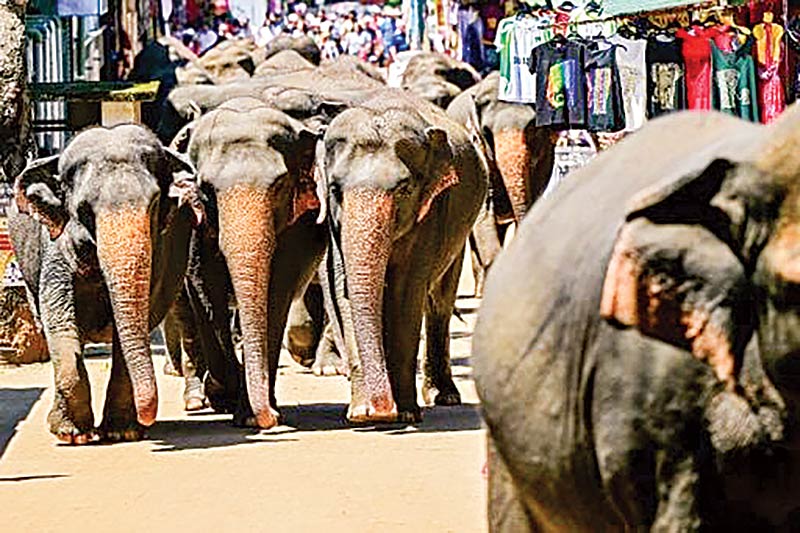
Elephants return to Sri Lanka’s Pinnawala Elephant Orphanage after taking their daily bath in a river
Deputy Minister of Environment Anton Jayakody told AFP on Sunday that 450 elephants and 150 people were killed in clashes in 2023, continuing an alarming trend of fatalities in the human-elephant conflict. The previous year saw 433 elephants and 145 people were killed.
Killing or harming elephants is a criminal offence in Sri Lanka, which has an estimated 7,000 wild elephants and where jumbos are considered a national treasure, partly due to their significance in Buddhist culture.
But the massacre continues as desperate farmers face the brunt of elephants raiding their crops and destroying livelihoods.
The minister was confident the new government could tackle the problem by preventing elephants from crossing into villages.
“We are planning to introduce multiple barriers—these may include electric fences, trenches, or other deterrents—to make it more difficult for wild elephants to stray into villages,” Jayakody told AFP.
Life style
Growing the Cultural Landscape with Suhanya Raffel
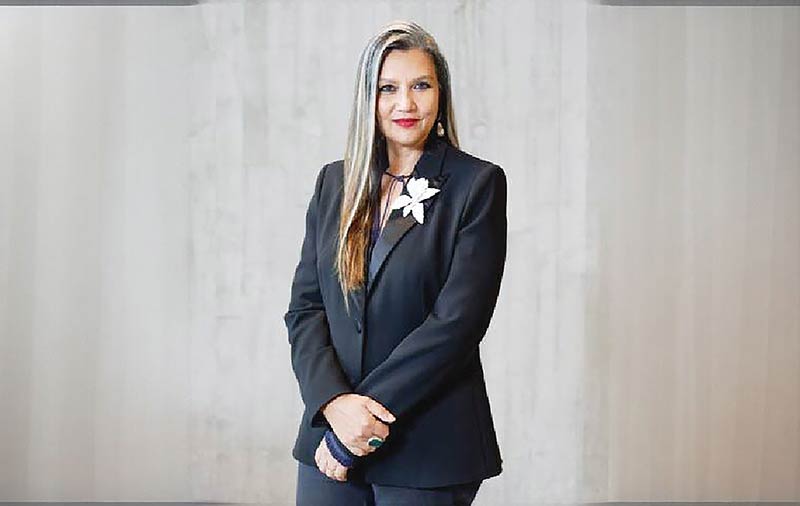
The Geoffrey Bawa Trust which was launched its 2025 is followed by Curatorial Conversations Series. Recently a presentation was made S by M+ Museum director and Geoffrey Bawa Trustee Suhanya Raffel. Speaking at the new Bawa Space on Horton Place, Raffel drew on extensive experience in the museum and art world to present insights and programming from the M+ Museum in Hong Kong. M+ is Asia’s first global museum of contemporary visual culture and presents itself as an intersection of visual art, design and architecture, and the moving image.
The evening presented an opportunity to hear from a leading expert in the museum field and discuss Sri Lanka’s present and future cultural landscape. It also highlighted the role of the Geoffrey Bawa Trust in conserving the legacy of the architect and his collaborators, and promoting contemporary art and design. “There are amazing artists, great designers, and reactive minds in Sri Lanka and the region,” Raffel said at a press event earlier in the afternoon. “There is opportunity in the aspiration to establish things, artists doing very important work, and the energy of individuals to try to make a difference.”
In part, this opportunity stems from the lack of established large-scale infrastructure to conserve Sri Lanka’s modern cultural legacy and support emerging artists. While there is the scope to shape the domestic art world and build institutions reflective of the local cultural community, there are also limitations and challenges in realising this potential.
Raffel spoke extensively about the need to build curatorial skills and knowledge and nurture cultural leaders in the region. Recognising this need, the Geoffrey Bawa Trust maintains public programmes, including exhibitions, residencies, tours, and lectures, to broaden public discourse and knowledge on the built environment and the arts in Sri Lanka and overseas. To fulfil curatorial needs and encourage growth in artistic and cultural institutions such as museums, the Trust employs a dedicated curatorial team and runs a robust internship and training programme. It is hoped that building this skill base will encourage others to explore similar career opportunities and support art, design, and architecture in the region. Sri Lankan visual arts over the past century have enjoyed wide international acclaim. “Sri Lanka is known globally for its creative work,” says Raffel, “it is culturally very strong.”
Geoffrey Bawa is a great example of this global influence. During his lifetime, the architect was very well-known in Sri Lanka and among contemporaries around the world. His structural, landscape, and furniture designs continue to guide and inspire. “It is very important for makers to be seen with their international peers,” Raffel explains. This cultural engagement on regional and international platforms is paramount for ensuring open dialogue and exchange. This means supporting collaborations, encouraging foreign markers to come to Sri Lanka, and exhibiting Sri Lankan work internationally.
The Trust is working to support this global dialogue by hosting installations by artists and makers from Sri Lanka and abroad, as was done in celebration of Geoffrey Bawa’s 100th birthday and again throughout the To Lunuganga programme from 2023-2024. The Trust took Geoffrey Bawa’s work to the world in 2024 with the travelling It is Essential to be There exhibition in Sri Lanka, India, and the United States.
The Trust is proud to be part of major professional international forums such as the International Confederation of Architectural Museums and the Committee for Modern and Contemporary Art Museums, both affiliated with the International Council of Museums. These platforms are vital for global knowledge sharing and advocacy. “We want more of these types of collaborations to happen both with the Geoffrey Bawa Trust, but also other arts and cultural institutions in Sri Lanka,” says Raffel.
In furthering this mission, the Trust is excited to present the new Bawa Space as the organisation’s public face and offer opportunities for the public to engage with the Trust’s work. Located in a recently restored Bawa-designed house from 1959, the Bawa Space doubles as the Geoffrey Bawa Trust headquarters and archives, as well as a new gallery and space for talks and events that will continue year-round.
Life style
Colombo Fashion Week 19-22 February: Two decades of creating the Fashion Eco-system in Sri Lanka

This year CFW will showcase a selection of Emerging Designers alongside established Sri Lankan designers. Adding international flavour will be well known designers from India Suket Dhir, Urvashi Kaur and Zaheer Abbas from Pakistan.
Colombo Fashion Week (CFW), presented by Mastercard, enters its 22nd year in 2025 with its Summer edition, marking another milestone in its journey as one of the four fashion weeks in Asia that have surpassed 2o years.Emerging Designer initiative of CFW this time remains one of its main pillars, providing an entry point for the next generation to pursue design-based entrepreneurship. This in line with the introduction of the Craft Fashion Fund this year is a testament to this commitment. The Craft Fashion Fund will select two winners, one who incorporates batik and another who utilizes crafts other than batik. This initiative passed 20 years.
Over the years, CFW has proven to be the backbone of Sri Lanka’s fashion design industry—its only voice—while creating a fashion ecosystem that provides support to new emerging designers entering the industry. Informally known as South Asian Fashion Week, it serves as a regional hub due to its geopolitical advantage. It is also one of the most significant fashion weeks in South Asia, having played a crucial role in revitalizing the country’s fashion design industry.
This year, Colombo Fashion Week has also expanded its international footprint since joining as a founding member of the newly created BRICS International Fashion Federation. This aligns with CFW’s ongoing mission to bridge diverse fashion markets and foster creative dialogue across continents. As part of this federation, CFW has signed a designer exchange program with BRICS, where a designer from a BRICS country will showcase their work at CFW, and a Sri Lankan designer will present their collection there. CFW continues to play a pivotal role in presenting Sri Lanka through the lenses of arts, culture, and sustainability, further contributing to destination marketing on a global scale.

The Head Table From L to R: Harsha Maduranga, GM – Vision Care, Yatila Wijemanne, Chairman – Juniper, Dr. Vibash Wijeratne, Dirand CEO – Ninewells, Shamara Silva, Mrkt & Media Dir – Unilever, Ruwan Perera, CEO – NDB Wealth, Kamal Munasinghe, Area VP and GM – Cinnamon Grand, Ajai Vir Singh, Founder – CFW, Sandun Hapugoda, Country Mgr – Mastercard, Samrat Datta, GM – Taj Samudra, Bernhard Stefan, MD – Nestlé Lanka, Ramani Fernando, Founder – RF Salons, Arjuna Kumarasinghe, MD -Cargills Food & Beverages
Ajai Vir Singh, Founder, Colombo Fashion Week stated: “Colombo Fashion Week has consistently demonstrated its commitment to developing Sri Lanka’s fashion industry through strategic international partnerships and innovative platforms. Our growing international recognition and expanding designer network reflects vital role this platform plays in positioning Sri Lanka through its creative industries.”
Mastercard, as the presenting partner, continues to champion CFW’s vision of sustainable and inclusive fashion innovation, focusing on digitizing sustainability initiatives and supporting small and medium fashion enterprises.
Sandun Hapugoda, Country Manager, Sri Lanka & Maldives, highlights: “Mastercard is thrilled to partner with Colombo Fashion Week once again, celebrating the incredible talent and creativity within the fashion industry. This partnership aligns perfectly with our commitment to support local artistry. Together, we aim to inspire new possibilities, connect communities, support sustainable fashion initiatives, and elevate the local fashion industry to a global audience, delivering a truly priceless experience. We also anticipate CFW to be a great support to boost the Sri Lanka tourism industry as well.”
The Craft Fashion Fund encourages young designers to engage with and incorporate Sri Lankan crafts into their collections. This approach has been highly successful for designers in other South Asian countries, where traditional crafts have helped establish a unique identity for them. Sri Lankan fashion has its best opportunity to develop a distinct identity when designers integrate local crafts into their work. The developing of this identity has been professed by CFW among the design fraternity, so they are able to create market demand beyond Sri Lanka.
The Emerging Designer initiative of CFW remains one of its main pillars, providing an entry point for the next generation to pursue design-based entrepreneurship. This in line with the introduction of the Craft Fashion Fund this year is a testament to this commitment. The Craft Fashion Fund will select two winners, one who incorporates batik and another who utilizes crafts other than batik. This initiative will support two exceptional designers, ensuring the preservation and evolution of Sri Lanka’s rich artistic heritage. This season, fifteen emerging designers will present their collections, further demonstrating CFW’s dedication to fostering the next generation of fashion talent.
Fazeena Majeed Rajabdeen, Director & CEO, Colombo Fashion Week further added: “Colombo Fashion Week, with its focus on nurturing new talent and emerging designers, has played a pivotal role in reviving and propelling Sri Lanka’s fashion industry. We are proud to present 15 emerging designers this year and to have Sharmila Ruberu mentoring these designers on collection planning. This, along with the Craft Fashion Fund, reiterates our commitment to further the thriving ecosystem we have built, embracing sustainability and empowering young talent.”
Colombo Fashion Week Summer 2025 is set to transform Colombo into an immersive fashion destination by showcasing designers across three of the city’s most prestigious locations. The key partners of Destination Colombo includes Shangri-La, Taj Samudra, and Cinnamon Grand. The shows will feature an impressive roster of international and local talent, including designers from India, Italy and Russia. Renowned creators such as Rimzim Dadu,
Cettina Bucca, Suneet Varma and JJ Valaya, will present alongside celebrated Sri Lankan designers including Fouzul Hameed, Sonali Dharmawardena, Asanka De Mel, Aslam Hussein, Kamil Hewawitharana, Dimuthu Sahabandu, Indi Yapa Abeywardena and Charini Suriyage.
Colombo Fashion Week 2025 is proudly supported by Mastercard, presenting partner along with Shangri-La, Cinnamon Grand, Taj Samudra, NDB Wealth, Yatra, Ninewells Aesthetic Centre, Tresemme, Vaseline, Juniper, Chupa Chups, Nestle-Nescafe, Vision Care, Knuckles, Hameedia, Ramani Fernando, Wijeya Newspapers, Hard Talk, Acorn and Emerging Media.
-

 News5 days ago
News5 days agoCommercial High Court orders AASSL to pay Rs 176 mn for unilateral termination of contract
-
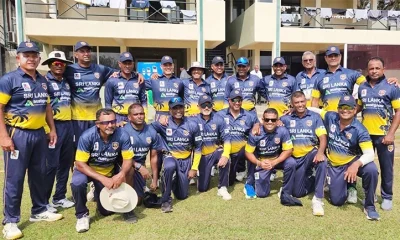
 Sports4 days ago
Sports4 days agoSri Lanka face Australia in Masters World Cup semi-final today
-
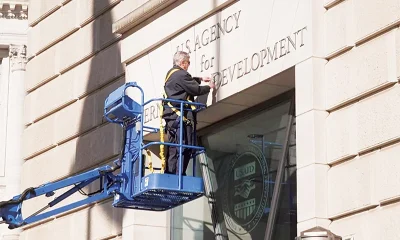
 Features6 days ago
Features6 days agoUSAID and NGOS under siege
-

 Features6 days ago
Features6 days agoDoing it in the Philippines…
-

 Midweek Review5 days ago
Midweek Review5 days agoImpact of US policy shift on Sri Lanka
-

 News4 days ago
News4 days agoCourtroom shooting: Police admit serious security lapses
-
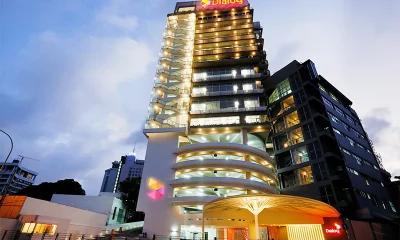
 Business6 days ago
Business6 days agoDialog delivers strong FY 2024 performance with 10% Core Revenue Growth
-
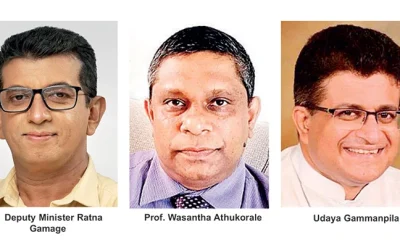
 Business5 days ago
Business5 days agoBudget 2025: A spectrum of reactions and perspectives


